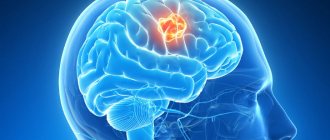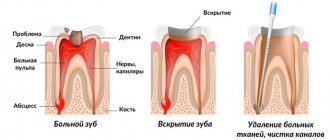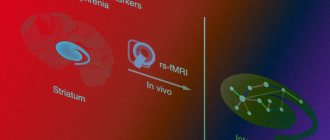Tension in the body has a bad effect on a person's condition. It leads to muscle tone, and tension in this area impairs blood circulation, body nutrition is disrupted, and energy levels decrease. At the same time, even those who understand that the body is already like stone and something needs to be done about it, do not know exactly how it can be easily and quickly relaxed. AiF.ru spoke about the consequences of constantly keeping the body in tight muscle tone and what techniques will help relieve this tension osteopathic doctor Vladimir Zhivotov.
Muscle tension
First of all, we must remember that overstrain can be physical and emotional. And when we talk about the first, we cannot ignore the second. As for physical overstrain, if the resources of the human body allow it to be compensated for, everything is fine. This is normal: we constantly experience tension in one way or another.
But, if it was strong and prolonged and exceeded the body’s capabilities, it can lead to the formation of undesirable changes in the muscles, which requires the intervention of a specialist: an osteopath or massage therapist. When changes accumulate and the body cannot cope with them, a person may be lethargic for a long time and feel a lack of energy, which affects his quality of life and productivity. In addition, pain may appear in different parts of the body.
Article on the topic
Do not be nervous! 9 ways to quickly calm down Let's not forget about stress. When we do something - work, study - while experiencing strong emotions, we aggravate the situation. Physical activity accompanied by emotional instability and stress is dangerous for the body. Therefore, remember that creating a positive emotional background has a positive effect on our health. When the body releases the right hormones for a good mood, this is an excellent prevention of physical stress.
No matter how scary it may sound, the fact remains: 95% of children receive a birth injury. Consequences that were not eliminated in childhood create an additional risk zone, in particular, for overexertion, spasms, etc. And, if this happens often, it is necessary to contact a specialist and eliminate the consequences of injuries.
How to relieve tension yourself?
If you feel tired and uncomfortable after an emotionally or physically difficult day, try to relax. The following techniques will help with this:
- Relaxation. It is important that no one bothers you. Lie on your back, close your eyes. Breathe slowly and evenly. Mentally go through all the muscles: from the back of your head to your toes, relaxing each one. Slowly return to your face. Relax your cheeks, chin, eyelids. Breathing is smooth, almost imperceptible. The duration of the exercise is 1-5 minutes.
- Warm bath. It will help you relax and lift your spirits. It's a good idea to add sea salt or essential oils to the water.
- Massage. You can do it yourself, but it is better if the procedure is performed by a specialist.
- Physical exercise. They are especially helpful when there is no time or opportunity for privacy, since they can be performed without leaving your workplace. Don't worry, others won't notice anything.
What are the consequences?
Few people think about the consequences of muscle tension. However, they can be quite serious. So, first of all, tension in the body, which is constantly present, becomes the cause of headaches. Spasms compress blood vessels and nerve endings, disrupt blood supply to organs and impair the functioning of the nervous system. The most common spasms of the muscles of the neck and shoulders occur: this is typical for sedentary types of work. Against the background of this disorder, headaches, migraines develop, and even vision deteriorates.
Naturally, due to constant muscle tone, problems with posture develop, because muscle spasms often even change the geometry of the skeleton.
Another consequence of constant tension in the body is a malfunction of the internal organs. After all, problems develop with lymph flow and blood circulation, breathing goes wrong (it becomes shortened), the functioning of the digestive system is disrupted, etc.
And, of course, hard, tense muscles cannot stretch well. Accordingly, a person becomes inflexible, it is more difficult for him to perform some simple manipulations, etc.
To avoid the development of such complications or reduce the potential danger if they develop, it is worth contacting a specialist. Typically, exercise therapy, certain sedatives and massages are offered to relieve tension. But, if it is not possible to see a doctor “here and now,” you can help the body on your own. To do this, I recommend several methods, or better yet, all at once.
Burnt out at work? Overwork is the cause of nervous tics and depression Read more
Gymnastics in the office
At work, many of us spend most of our time sitting at the computer. This has a detrimental effect on the muscles of the back and shoulder girdle, and can also impair blood circulation in the legs. Someone, on the contrary, spends their working day standing and thus overloads the muscles of the back and lower extremities.
This mode of operation is fraught with serious consequences, but they can be avoided if you regularly do certain exercises :
- Relaxation of the neck muscles : slowly tilt your head first to the right and then to the left shoulder. Repeat the side bends 10 times, then do another 10 head tilts forward and backward. The exercise can be done while sitting at your desk or standing.
- Gymnastics for the eyes: often, due to prolonged work at the computer, you may feel the heaviness of the eyelids, dryness and pain in the eyes. To get rid of discomfort, just switch your attention to another object and sit with your eyes closed for several minutes. It is best to turn your eyes in different directions, move them left and right, up and down and diagonally.
- Relaxing the shoulder muscles: rotate your shoulders forward and backward 10 times in each direction.
- Relaxing the back muscles : stretch your arms up, bringing your palms together, and bend to the right and left sides. You should feel your back muscles working. Perform 10 bends in each direction. Then stretch your arms forward and stretch to the right side, lock in this position for a few seconds and then stretch to the left.
- Relaxing the arm muscles: rotate your wrists 10 times in each direction, shake your relaxed arms. Clench and unclench your fist, spreading your fingers as far apart as possible. Shake each finger and rotate it in different directions.
- Relaxing the leg muscles: Straighten your leg, stretching it forward, and then bend it. Repeat the exercise 20 times on each leg. Move your feet in different directions (at least 15 times). Stand on your tiptoes and lower both feet at the same time from toe to heel. To improve blood circulation, perform calf raises with both legs while standing.
If you perform these exercises regularly 2-3 times a day, you can achieve the desired result faster. The main thing is to do them smoothly and not be afraid of possible discomfort at first (this is possible due to stiff muscles) [T. Mantulina, 2020].
When is it necessary to see a doctor?
Myalgia in certain situations may be one of the signals that serious (dangerous) processes are occurring in the body. Together with other symptoms, muscle pain may indicate the threat of meningitis. It is also not uncommon for pain to warn of the risk of a heart attack. They also occur before a heart attack.
In such cases, it is imperative to immediately consult a doctor. Below are characteristic symptoms, when they occur it is dangerous to hope that the pain will “go away on its own”:
- difficulty breathing, shortness of breath appears;
- sudden memory problems, frequent forgetting;
- seizures accompanied by convulsions;
- numbness of individual parts of the body;
- a sharp deterioration in vision, up to its loss;
- problems (rigidity) in the muscles of the back of the head, accompanied by elevated temperature;
- a constantly increasing feeling of weakness;
- immobilization of limbs;
- mental problems;
- disruption of normal perception of reality;
- inappropriate actions;
- frequent fainting without an obvious reason;
- pain in the chest, “radiating” to the jaw, neck or arms.
Such symptoms require immediate action. Delay (untimely medical care) can lead to irreparable consequences.
Why do muscles feel tense when they are not actually tense?
So why can muscles feel tense even if they are physically relaxed? I think we can use the concept of pain as an analogy here. Pain can exist even in the absence of tissue damage because pain results from the perception of a threat, and perception is not always true. Pain is essentially an alarm, and alarms sometimes go off even when there is no real danger.
Perhaps a similar logic is present in the case of feeling muscle tension. This feeling occurs when we unconsciously perceive (correctly or incorrectly) that there is a threatening condition in the muscles that requires correction of movements.
So what is this threatening condition that the feeling of muscle tension is trying to warn us about? Of course, this is not just the presence of tension, because muscles are designed to generate tension, and we often feel tension in the muscles, and then they completely relax.
Those. Tension itself is not a threat, but lack of adequate rest or blood flow can be, which can cause metabolic stress and activate chemical nociceptors. Thus, the problem that the feeling of tension is trying to warn us about may not be the existence of tension, but the frequency of tension (lack of rest) or lack of blood flow (especially to the nerves, which are very “bloodthirsty”).
With that in mind, I think of the feeling as tight and as a type of pain, perhaps too mild to be called pain, but it's definitely bothersome. True, it has a certain feature that forces a person to change his resting position, move or stretch, which is fundamentally different from pain behavior, which is characterized by a desire for immobility. In other words, pain can limit our mobility, while the feeling of tension forces us to move.
Causes of muscle pain
Pain in the skeletal muscle group is often a consequence of previous injuries. We are talking not only about direct mechanical effects on the human body that provoke corresponding consequences. Injuries and subsequent pain can occur if a muscle is torn. A similar situation occurs when they are stretched. The difference between both types of injury is the number of damaged muscle fibers. Tendon tears and ruptures also cause pain.
In both cases, the body is able to heal itself. Tendons and muscles are characterized by regeneration. However, severe tears require medical intervention. With such damage, the body's potential is insufficient. To return the structures to normal functioning, it is necessary to resort to prompt restoration.
Disturbances in the normal rhythm of the nervous system provoke the appearance of seizures. They can also occur as a result of excessive prolonged stress on the body. The result is excessive muscle contraction. The consequence is pain.
The process of pain
Pain during myalgia occurs both locally, in certain muscle groups, and spreads over large areas of the human body. Although there are several hundred different muscles in the human body, they can easily be divided into two groups based on the principle of their functioning.
The main task of skeletal muscles is to ensure human body movements. They also serve to communicate between the bone structures of the body. It would seem that it is in the skeletal muscles (due to their functional characteristics) that pain should most often occur.
In fact, smooth muscles are often susceptible to unpleasant sensations. This is especially true for people who lead a physically inactive lifestyle.
It is important to note! The walls of the hollow internal organs of the human body are the places in which the muscles of this group are located. The purpose of smooth muscles is to ensure the normal functioning of human organs and entire systems. They are found in blood vessels, heart, bladder, stomach and other organs.
Depending on which muscle the “failure” occurs in, the body signals through pain about a problem in a certain area of the body. Naturally, disruption of the normal functioning of the smooth muscle located in the stomach provokes discomfort in the abdominal area.
Muscle pain caused by injuries
Almost any type of injury can cause pain in the muscles. In particular:
- stretching of muscle fibers;
- excessively repetitive movements;
- muscle fiber ruptures;
- excessive loads;
- blows with blunt objects.
In addition, pain occurs when the nerve is compressed. The phenomenon occurs when a person develops spinal stenosis. Compression can also occur due to a herniated disc.
Trapezius muscle treatment
Treatment of the trapezius muscle can be divided into primary and auxiliary. The main thing is gentle manual therapy. It differs radically from conventional manual therapy not only in its softness and safety, but also in its higher efficiency. And this is not surprising, because gentle manual therapy consists of 90% muscle and fascial techniques. Even in the treatment of disc herniation and other diseases of the spine, gentle manual therapy does not act as usual - sharply and with a crunch, straightening the vertebrae, but through the so-called soft muscle “lever”, which completely eliminates any danger.
Auxiliary treatment of the trapezius muscle includes physiotherapy, massage and drug therapy, which, in our opinion, is appropriate only in extreme cases of acute pain. And, to conclude the topic, a few words about prevention.
Perform one preventative session of gentle manual therapy once every 3-6 months, and you will forget how the trapezius muscle hurts.
How does this affect the body?
Unfortunately, the number of negative emotions (rage, worry, hatred, grief, anxiety, danger, sadness, melancholy, sadness, horror, disgust, disapproval) that we experience is several times greater than the number of positive ones. So there are more muscles that express negative affect, and they react faster.
Walking through life with clenched teeth, we not only get tension in our masticatory muscles, but also health problems. The mobility of the lower jaw and mouth decreases, chronic pain in the face begins, and teeth wear out.
Another negative emotion that greatly affects appearance is contempt. The corrugator muscle is responsible for expressing a moral assessment of the world around us. The expression of disgust is given by the muscles that raise the upper lip, the wing of the nose, and the orbicularis oculi muscle. By the way, the same muscles are responsible for the expression of pain, so they are often confused.
The feedback hypothesis is based on the fact that facial muscles not only express emotions, but also enhance emotional experiences.
Stress and facial muscles feed each other, creating a vicious circle of endless worries. This idea was first put forward by Charles Darwin and William James 150 years ago. Subsequently, neurologists, psychologists and biologists of past and present years developed this concept. It’s nice that it was our Soviet scientists – M.N. Rusalova and E.D. Chomskaya were the first to prove this connection using an objective technique - electromyography.











